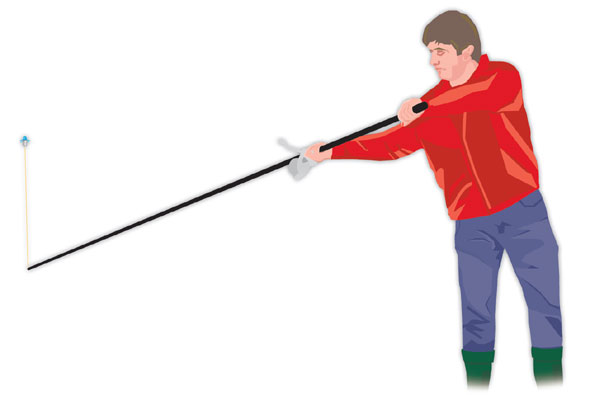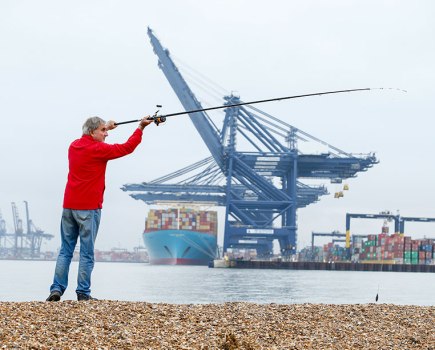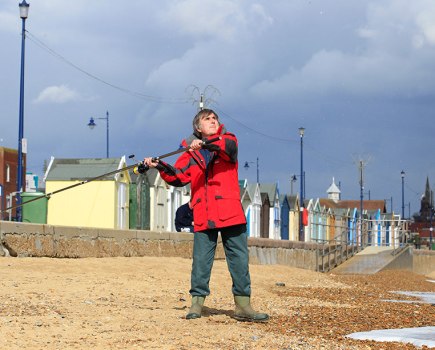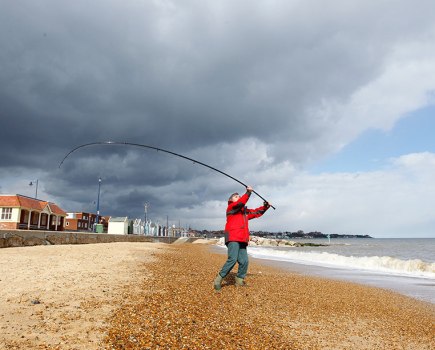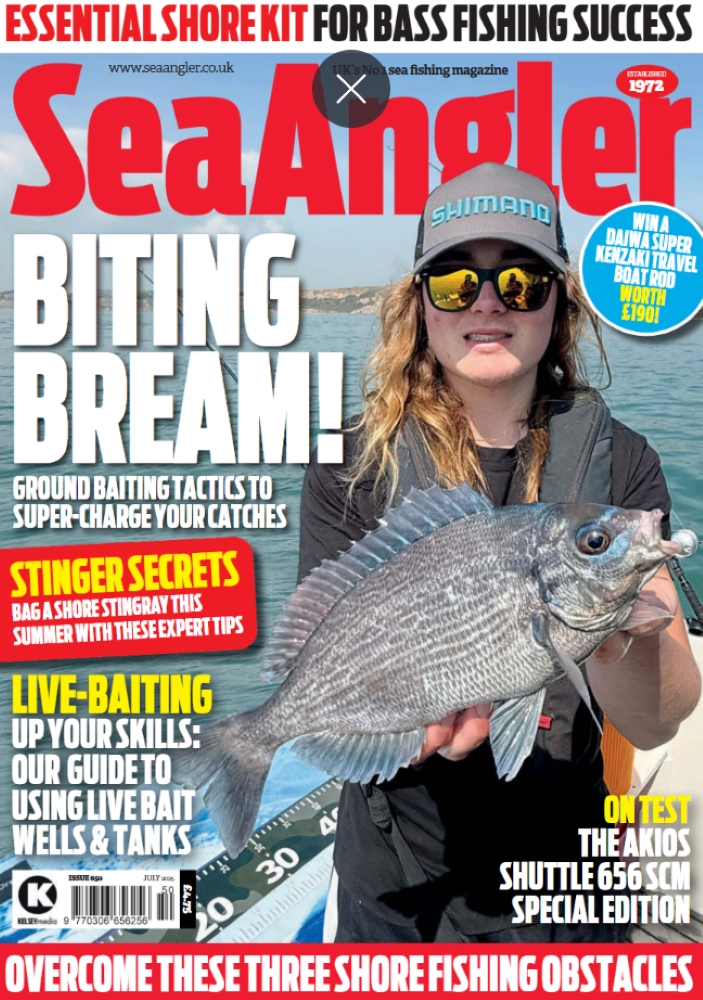Did you know that your beach fishing rod ‘talks’ to you? We bet you have stood on the beach belting the crap out of it… and not listened to a word it has said to you. Beach casting coach John Holden has walked you through the key exercises leading up to making a real cast and now urges you to listen for when the rod tells you to: “Get ready… now hit it”
THE ‘ENGINE’ of good casting is a turn of the body combined with a hammering arm action. The body turn alone is very powerful; so much so that during a big cast the right shoulder must move into a heavy hammering position to prevent the arms from being overloaded in mid-cast.
Imagine a video of a cast running in slow motion. The style does not matter. Freezeframe the cast a split second before the hammering begins. Notice how the rod is already nicely compressed and on plane. Nearly all the drive is coming from body rotation. The caster’s right shoulder has moved in behind the rod and is just beginning to push.
As well as generating power, the body has also become a stable platform for the rod to work against. When technique is right, the body easily resists heavy rod pressure. During a bad cast, the body collapses when the rod begins to wind up hard and generate power.
The moment when all these desirable factors come together is the cast’s ‘launch point.’ All good casts arrive at this solid, power-packed position. You can tell when launch point has arrived, because rod feedback tells you so. The rest of the cast is automatic; an effortless surge of arm and body power rockets the sinker away.
Launch point is a moment within an action. It is a position that you move through, not to. Keep everything flowing smoothly. The mechanical action is pure turn-and-hammer – it does not suddenly become a highly skilled technical challenge because you use rod and reel instead of an old broomstick.
If the cast goes wrong, put down the rod and go back to the previous exercises to refresh your memory.
A word on timing. Launch point is not a split second event that demands lightning reflexes. It contains width of movement, and allows a lot more time than you might imagine. The rod will tell you all you need to know. Learn to communicate with it.
Feedback from the blank, mostly through your right hand, tells what is happening throughout every cast. It’s as if the cast speaks to you. “Here comes the rod… get ready… now hit it!”

Casting style and final launch point
From launch point onwards, all casting styles are virtually identical since they use the same shoulder thrust and hammering arm action.
The goings-on that precede the launch point are very different. Consider the major differences between a simple off-ground style and big pendulum sweep, for example. It is what happens before the launch point that makes a casting style what it is.
A casting style doesn’t automatically have a solid foundation and launch point. This must be carefully built in. Without that vital moment when everything comes together, you are sunk regardless of whichever style you attempt to learn. A tournament pendulum style without a rock-steady launch point is like a racing car without an engine. It might look great, but it won’t get far.
Conversely, almost any old cast that allows you and the rod consistently to arrive at a sound launch condition is very likely to be highly effective. Never a tournament winner, but still a very powerful fishing cast at the very least. A gentle flick from a solid launch point is virtually guaranteed to fly at least a hundred yards.
The really good news is that when proper power flow and launch point have been established, you can easily drop that ‘engine’ into any style that you fancy – pendulum swing, South African, aerialised ground cast, tossback, zoom cast, easy cast. Any cast.
The only significant difference between them is what precedes the launch point. During those first moments of a cast there are only three things you can do with the sinker anyway – swing it, hover it ordump it on the ground.
Discovering your personal ‘launch point’
Now we start casting for real, beginning with two exercises based on the usual turn-and-hammer theme. Both are excellent casts in themselves, simple yet powerful, versatile and well capable of throwing baits more than 125 yards.
The aim is to become familiar with rod feedback and launch point. Ignore distance at this stage. These exercises answer the two most important questions in casting. What does a good cast feel like? How does that feeling differ when a cast goes wrong?
Don’t despair if you make few good casts at this stage. Even if you were to make a complete hash of everything, you would still be able to feel what is going on. At this stage, learning to feel is the critical issue. Listen to what the rod is saying to you, even if you don’t yet know what it all means.
I cannot over-stress that the absolute bottom line in good casting is learning to work by feedback and feel, not by analysing movements and techniques. If you’re unsure about the mechanics, re-run previous months’ exercises. They are nothing more than simple, natural actions. Turning. Hammering. Feel them, then reproduce those same feelings with your own rod.
If your cast feels good but tends to fly to one side or at the wrong height, correct it by shifting your imaginary target around. Recall, too, that release should be automatic. Don’t hang on to the reel, or let go early, in order to force a correction. Play around with stance as well. Alter your foot position to correct sinker direction. Experience the differences in feedback that open and closed stances produce.
Concerning target position. During previous exercises we drove the hammer-head directly at the target. When you use a rod there needs to be an element of aiming-off, similar to how a rifle shooter aims slightly outside the bull to compensate for wind drift on the bullet. We’ll get into the technicalities later on, for this involves tackle choice as well as casting style.
For now it is enough to know that you must aim the force of the cast at one spot in order to make the sinker go somewhere else. For most casters, channelling the cast’s energy towards a target slightly to the right and elevated at about 40 degrees will produce a straight cast with plenty of height. But do be ready to experiment. Your choice of rod alone may call for the target to be shifted up or down in order to produce the correct trajectory.
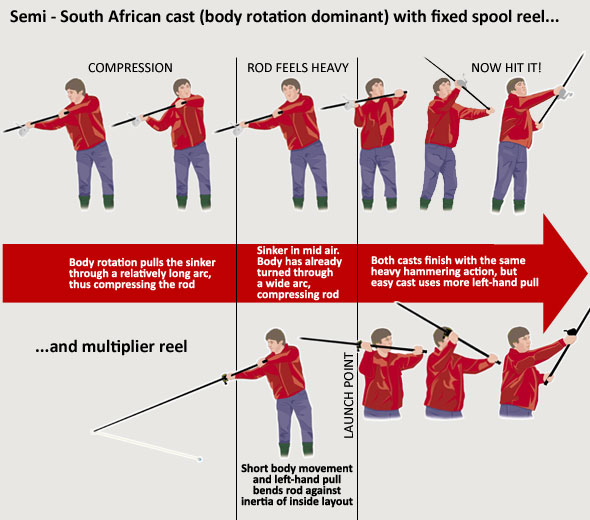
Launch point exercises
During the heavy hammering exercises you felt the weight bearing down on your right hand as you held the sledge hammer in the start position. The action began with a solid push with your right shoulder to get that weight moving. Then your arms swung the hammer-head through to the target.
The moment in that exercise just when the shoulder push begins is a very good approximation to the launch point in a real cast. The feeling is almost identical.
To reproduce those equivalent feelings with rod and reel, it is obvious that we need a means of compressing the blank so that it gives the impression of being heavy. It is the bending of the blank against the resistance of the sinker that does the trick, and there are two ways to achieve this pre-loaded state.
One uses a relatively small arc of rod movement against a high-inertia sinker layout. The other pulls the rod against lower inertia, but pulls through a longer arc.
If you haven’t guessed, these are the respective dynamics of the inside-layout ground style – sometimes called the easy cast – and the simple ground cast based on a shortened South African set-up.
You won’t generate much heaviness in the rod with these exercises, but there will be more than enough to produce the distinctive feeling that says you have arrived at launch point. There is also enough power on tap for a 150 yard cast, by the way.
You could be tempted to handle this modest weight with arm strength alone. Don’t! Use the sledge hammer technique where the righthand moves toward the shoulder in order to support, then drive, a heavy load.
Swing the big hammer a few times to check out that vital feeling and shoulder movement. It is essential to build the correct action into your casting at this early stage if you aim to graduate to high power off-ground and pendulum styles.
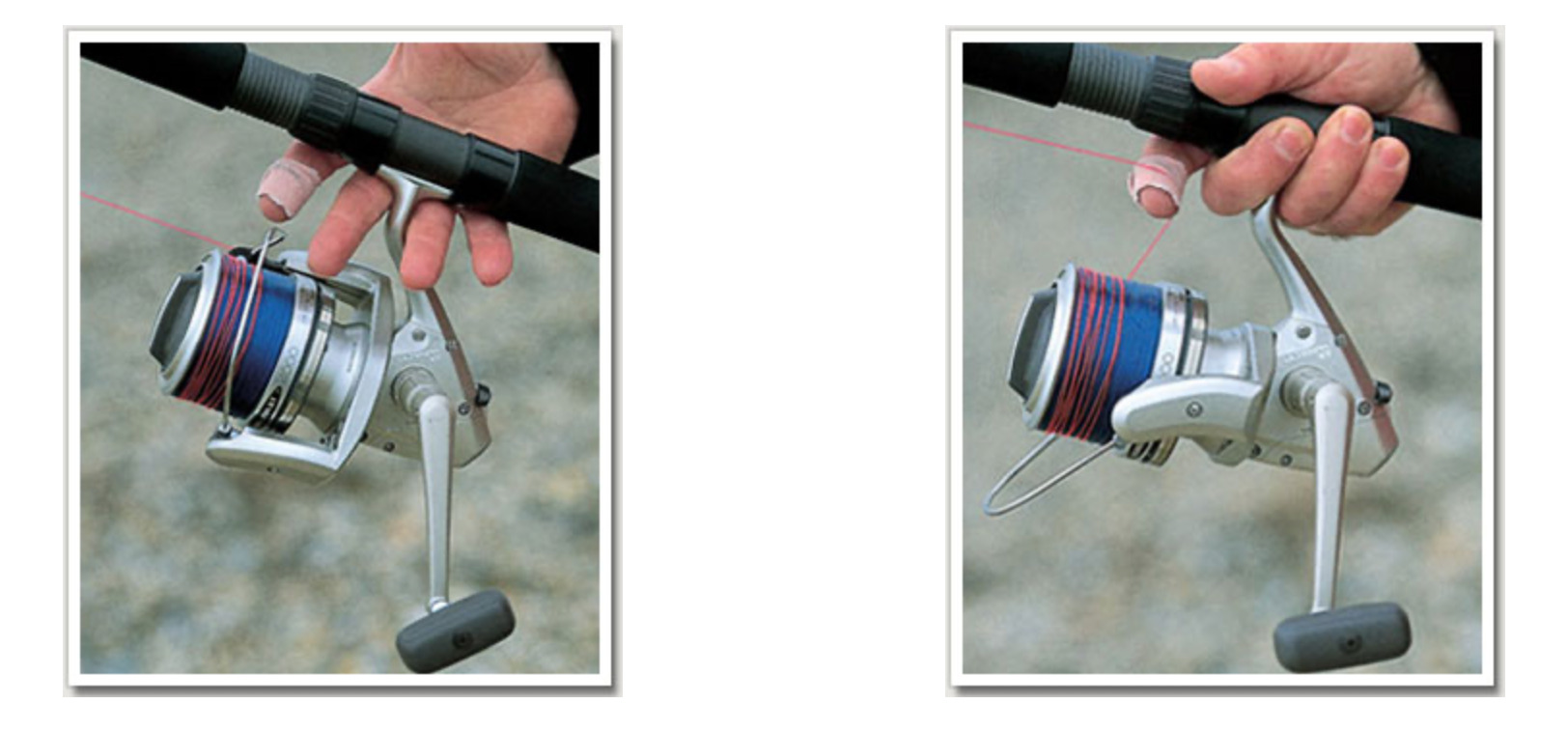
“Holding a fixed-spool reel properly helps you to feel the rod and increase control. Protect your finger, lock the spoola nd support the reel stand between your fingers. This improves grip and allows a cleaner line release.”

